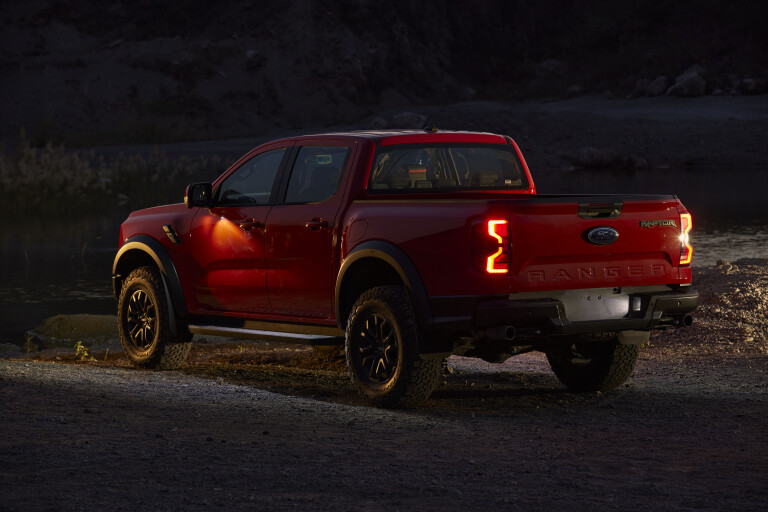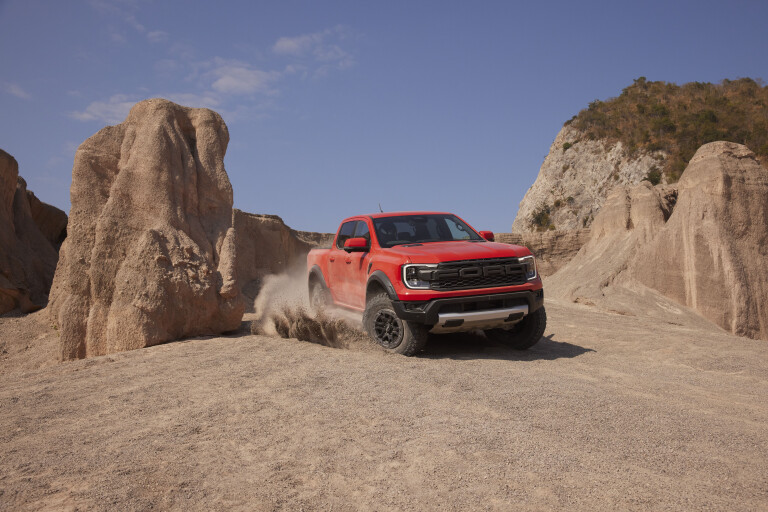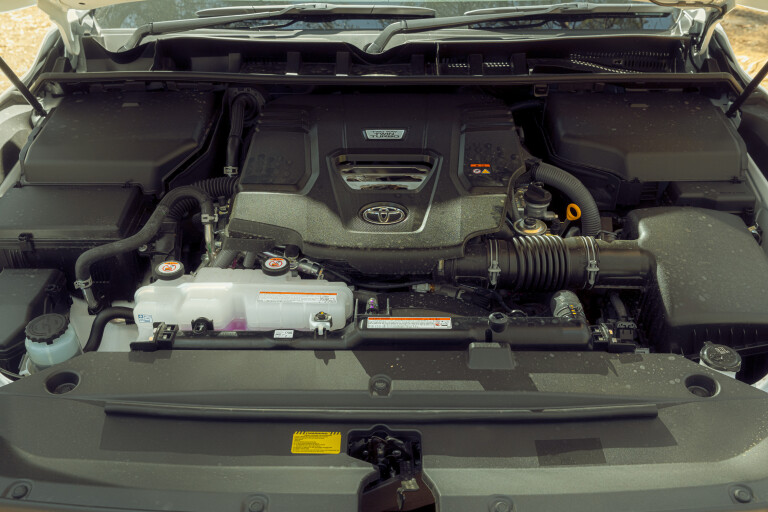
If things were continuing along as usual, the performance Raptor would come with a relatively large-capacity (5.0-litre or so) naturally aspirated petrol V8, an engine configuration that Ford knows a thing or two about.
The fact that there’s even a petrol engine in the new Ranger’s line-up, even if the Raptor is a bespoke performance model within the line-up, is also telling. Until it arrived, you couldn’t buy a petrol engine in a new mainstream 4x4 ute. The last time you could was in 2017 before Toyota withdrew the 4.0-litre V6 from Hilux.
In fact, it was a surprise that Toyota carried over the petrol V6 from the previous generation Hilux into the current generation model when it was released in late 2015. Toyota’s thinking at the time was that given no other manufacturer offered a petrol engine in a mainstream 4x4 ute, then the Hilux V6 would attract petrol-preference buyers from other brands.

As it turned out, that wasn’t the case, at least in sufficient numbers to keep the V6 on sale. By that time 4x4 ute buyers were totally convinced that the modern turbo diesel with its combination of relaxed power and good economy was the only way to go compared to petrol engines as they had known them.
It’s noteworthy, too, that the new Raptor isn’t offered with a diesel option in Australia and, as the curtain inevitably comes down on diesel engines in next decade or so, the replacement engine in 4x4s will be small to mid-sized turbocharged petrol engines, such as the new Raptor’s V6.
Don’t be surprised if the Raptor’s turbo-petrol V6 finds its way into mainstream Rangers here in a few years time, even if it does so in a detuned form than what’s found in the Raptor. The Raptor’s V6 has been tuned by Ford Performance from the standard version as sold in the USA in the Ford Explorer.

Meanwhile over at Toyota in those overseas markets where you can buy a petrol LandCruiser, the naturally aspirated 4.6-litre and 5.7-litre V8s are gone, replaced in the 300 by a 3.4-litre twin-turbo V6, the first turbo-petrol engine ever to appear in any LandCruiser. This engine will eventually be coming to Australia in the 300 Series – around or after 2025 – but almost certainly as the main part of a petrol-electric hybrid powertrain and will sell alongside the V6 diesel in the 300.
If new 4x4 ute buyers liked modern turbo diesels for their relaxed drivability where there’s good power and response at low and middle engine speeds combined with moderate fuel use, they will love these new-generation turbo-petrol engines. They, too, offer excellent low and middle-rpm response but combine that with the sort of high-rpm power that diesels just can’t do.
The turbo-petrol V6 in the 300, for example, has its maximum torque (650Nm) available at just 2000rpm but spins out to over 5000rpm to make a more than handy 305kW of power, a fair jump up from the 3.3-litre V6 diesel’s maximum of 227kW. Some versions of this 3.4-litre twin-turbo V6 – used in other Toyota-family models – have maximum torque available at an even more diesel-like 1600rpm.

Of course, the concern with a petrol engine, compared to a diesel engine, is fuel consumption but these new generation turbo-petrol engines will be far more fuel efficient than the naturally-aspirated petrol engines – like the 4.0-litre V6 that disappeared from the Hilux five or so years ago – without being quite diesel-frugal.
However, add on a hybrid system (electric motor/generator plus battery) and diesel-like economy becomes achievable.
These new generation turbo-petrol engines, with or without electric hybrid add-ons, have of course been around for a while now in pricier passenger cars and SUVs and some very pricey 4x4s – think Range Rover – but haven’t appeared as yet in mainstream 4x4 utes or wagons. But that’s changing.

COMMENTS